Travel Column: Up and Away, Down to Earth—Boston, Massachusetts
Posted by Stephanie Weyant
Dear Friends,
Recently I had a birthday, and my dear boyfriend wanted to give me a new adventure to celebrate. Knowing me and knowing us, it was the perfect, thoughtful gift. Our destination? Boston, Massachusetts for the weekend. For me, it was a city so close yet so far: one I had never visited but always wanted to see.
If you appreciate a clean and lively city, beer and good food, baseball, or especially American history, Boston should be on your list of places to go. Especially given the tragic events of this year’s marathon, now is as good a time as any to support Boston. I delve into all of this, so it’s another long story, I warn you. Hey, there’s a lot of stuff in this town. But even if you only have 48 hours, you can cram in one helluva weekend!
And to Tommy – I thank you from the bottom of my heart. You continue to give me the greatest memories year after year, and I’m a better person for it. This Sam Adams toast is for you.
So let’s go: follow me as we explore Boston!
Sincerely,
Stephanie
* * *
Boston, Massachusetts: 48 Hours…And a Couple of Centuries
By: Stephanie Weyant
It was April 18, 1775, and the North American settlers were on the brink of the Revolutionary War. Increasingly heavy taxes imposed on the colonies to finance wars abroad and the lack of colonial representation within the English Parliament had been fueling angry resentment among the people. There were Loyalists who still supported King George III of England, but there were many Patriots who desired independence from what they considered a growingly corrupt and tyrannical crown.
This fateful day would later make a legend out of Boston native Paul Revere, who at the time was already known as a master silversmith and active participant in the Boston Tea Party and politics. That April night, the British Redcoats, or “Regulars,” were approaching to confiscate all Patriot weapons, as well as arrest Samuel Adams and John Hancock for treason against king and country. Paul Revere, Patriot that he was, set out on his famous midnight ride to warn them. Truthfully, he did not act alone, nor did he succeed. Three men rode out that night, taking separate routes to increase the odds that one would avoid the British Redcoat checkpoints: Paul Revere, and fellow Boston area natives William Dawes and Dr. Samuel Prescott – the latter of whom was the only man to succeed. It was a risky move by all; one of many made by the Patriots in defiance of exceedingly suffocating English laws.
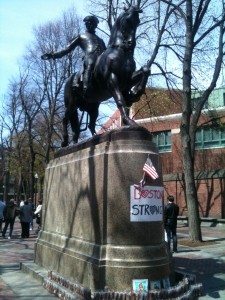
Paul Revere statue with a memorial for the Boston Marathon victims – religious images for the deceased and a candle for every person injured.
The plan worked, and their boldness and unwavering determination persevered. The midnight ride led to the Battles of Lexington and Concord – the ‘no turning back’ points triggering the Revolutionary War that would last until 1783. Facing bitter odds and an experienced opposition, the Patriots were largely outnumbered – 10 to 1 at times – and clearly not favored to win. Unorganized and informally trained, these were farmers against the greatest army on earth. But like the legendary midnight ride, the spirit of the Patriots and of Boston prevailed.
It’s this resilience and unity that still live strongly in Boston today. This past April, Bostonians were shaken to their core when two brothers, Tamerlan and Dzhokhar Tsarnaev, set off two massive explosions during the annual Boston Marathon, killing three but injuring 260. Devastated by the loss but certainly not broken, Boston banded together and received an outpouring of sympathy and support from around the world. Vigils were held; makeshift memorials were created. Candles had been lit, warm notes had been written on colorful yards of paper chains, and Boston Red Sox baseball caps were left by the dozens in tribute to all of those affected that horrible day. Everywhere you turn, you see merchants selling t-shirts boldly and proudly stating, “BOSTON STRONG.” Can’t argue with that.
* * *
It’s now the end of April and I step outside to breathe in the sun, the wind, and the 60˚ temperature. The sky’s crisp and rich blue is almost too bright, and I whip out my sunglasses to diffuse its intensity. My boyfriend and I have just arrived via (dare I say!) Bolt Bus; we couldn’t resist the $18 round-trip fares when a flight or the Amtrak train from New York City would have set us back $160 and $196 per person respectively. The time for every option – plane, train, and bus – from door to door was about four hours anyway; we reasoned that the combined savings of $284 over the flight or $356 over the train well justified the U.S. stigma that comes with bus travel.
The bus really can be a valuable option: it’s a comfortable coach with plush seats and WiFi, luggage storage, and a restroom. It’s clean. If you’re coming from New York, the driver will also stop midway at a Burger King or somewhere similar for a snack and additional restroom break. Given the frequency of the route, the buses do run on time and account for rush hour traffic. And for us, that savings was a night’s hotel and a good meal, which is where we did splurge. It was completely worth it, and I would travel that way again.
We hail a cab; not as easy in this city since they tend to be white or black – not the New York yellow we’ve come to expect. But finally, we arrive at our hotel: the Loews Boston Back Bay Hotel, which was previously Boston police headquarters and now houses the aptly named Cuffs Bar and Grill. Up the steps and into the lobby, there’s a vibe of contemporary blended with Art Deco; it’s warm and inviting but cool enough to feel anonymous. At the counter we’re greeted by a friendly desk clerk who kindly tells us our room is available, but if we wouldn’t mind waiting 20 minutes, she could arrange for a better corner room. In the meantime, we could grab a drink at Cuffs.
Downstairs at the bar, it’s not yet busy given the midafternoon hour. Tommy and I grab a couple of seats and order Sam Adams Summer Ale – a Boston brew and favorite. We roughly plan out our weekend: we like to walk and explore, but we also want to visit some specific, historic landmarks that only Boston can offer (of which there are too many to see in one weekend!).
Minding the time, we head back up to get our room key and drop off our luggage. I open the door to a spacious, well appointed corner room with plenty of natural light and contemporary, elegant furnishings. It’s quiet as well; if you come to Boston and plan to stay in the city, request a higher-floor room to lessen the street noise – it’s a great help, I assure you. Our room was booked through www.hotels.com at a rate including taxes of $250 per night. Staying in the chic Boston Back Bay area at a swanky hotel, this is a good value.
We freshen up and head out. To get our bearings, we wander through the Back Bay area, a trendy spot with chic and fun boutiques on Newbury Street and luxury brownstones on Commonwealth Avenue. Aromas of garlic and fresh fish taunt us as we pass al fresco diners. The cooler weather does not seem to deter the locals. I admit it deters me, so we find the perfect spot inside where the restaurant’s sliding doors have been opened to let the breeze flow.
Right at the front sits an empty table, looking out as the world begins to pass by. The place is Sonsie, an inviting and lively spot with a seasoned chef. We order a couple of cocktails and enjoy some of the freshest crusty Italian bread I’ve tasted – in my experience, a sign of more good things to come. Tommy and I share the sea scallops, an appetizer of plump, fresh catch with new potatoes, asparagus, bacon and leek – the combination will kiss your taste buds awake; we also try the chargrilled octopus with tomatoes, olives, and a harissa sauce – octopus can be rubbery and hard to swallow, literally, but it was nicely done here. We also order the goat cheese ravioli with spinach, slow-roasted tomatoes and goat cheese foam – a dish of superbly blended flavors and textures: I am certain I could not go to Sonsie again without ordering this. It’s the perfect wind down to a lovely day: energetic atmosphere, good drinks, great food, and front-row seats to a sunset and people watching.
* * *
The next morning, we rise and shine to another sunny Boston day, and we make our way toward the Freedom Trail. This 2½-mile stretch of red double brick takes you on a journey through the revolutionary era’s most significant landmarks. Beginning at Boston Common, it winds through the city, passing places such as the Massachusetts State House, the Boston Massacre site, and the USS Constitution, and covers a total of 16 distinctive sites.
Strolling through Boston Common, I am enchanted by the lush, rolling hills and swaying weeping willows. It’s a public green that was established in 1634 – the oldest park in the United States, and the perfect place to walk through as you sip a morning coffee or take an afternoon getting lost in a good book.
Across Tremont Street lay the remains of Boston’s elite in the Granary Burying Ground, dating back to 1660 and named for the grain stored nearby at what is now the Park Street Church. Here you will find tombstones of three signers of the Declaration of Independence: John Hancock, Samuel Adams, and Robert Treat Paine; Paul Revere is here as well, among many notable others. Feel free to walk through at your leisure – there is no entry fee. As we arrive, a local resident stands at the front gates with a folder highlighting facts and trivia. It too is free to borrow, though at the end a small donation is requested. We take one and decide to give $5 for the two of us – seems reasonable for a half hour of knowledge and entertainment. Whatever you do, please remember to return it. There is also no shortage of colonially dressed tour guides; we catch a few tidbits now and then from two different groups. Their boisterous voices are cheerful and seem to welcome passersby. For a graveyard, it’s very inviting. …but not in a creepy way.
Detouring from the Freedom Trail, we come upon a monument in tribute to the Irish Americans who emigrated from Ireland to survive The Great Hunger. The series of potato crop failures culminating in 1847 led to the death and exodus of millions of native Irish, many of whom came ashore in Boston Harbor and left an indelible imprint on the city as they built their new lives in America. The Irish Famine Memorial on Washington Street is a circle with two families: first, the starving and suffering Catholic Irish family right off the ship; and the second family a generation later, healthy and robust, triumphing over dire conditions and adversity, embracing their new life. It’s very moving. Take 10 minutes to read the plaques and look at the statues; you won’t be disappointed.
My own hunger, though much less significant and now in perspective, still makes me look at my watch. It’s nearly 12:00pm. Lunch! Following our historical theme, we meander toward Faneuil Hall where the oldest continuously operating restaurant still serves the finest clam chowder around. The Union Oyster House, though a tourist-heavy destination, is a must-see in my book: the food is fresh and comforting, and the place has been around since 1826. We grab two seats at the Oyster Bar downstairs – where the waggish bartenders shuck oysters and entertain the patrons. They mock me for my Diet Coke – it’s only noon! – but it’s all in good fun. We order a couple of vodka oyster shooters at the end to make up for it. We start with both soups, though I’d recommend ditching the fish soup in favor of the clam chowder: it’s richer, heartier – just better. Then it’s the fried Boston scrod and grilled filet of sole: a nice blend of heavy versus light, and Tommy and I share both until we’re stuffed. Before you leave, walk upstairs and check out the history on the walls. It really is a living museum.
Back onto our planned Freedom Trail walk, the next stop is Paul Revere’s house. Built in 1680, Paul Revere lived here from 1770 to about 1800. The home offers a self-guided tour with attendants dotted throughout to answer questions and offer trivia to interested guests. Tickets are a modest $3.50. Large and spacious given the standards of the time, the home is appointed with some of Revere’s furniture and silver pieces. According to the Paul Revere Memorial Association, 90% of the building’s structure along with two doors and three windows are original – they’ve stood the test of time for 333 years. For a wooden structure, that’s pretty impressive. Speaking of longevity, also quite remarkable was Revere’s: a father of 16 children throughout two marriages, he lived to be 83 years of age in a time when a common cold could mean death. He may not have reached his friends that April night to warn that the British Regulars were coming, but he seemed to lead a very full life indeed. Well done, sir.
In all of our walking, I have spotted for the third time a person carrying a blue and white box labeled “Mike’s Pastry.” I love pastry. Having passed this place but not realizing its apparent draw, Tommy humors me and we head back to get one of these famous treats. Inside, the lines are 15 people deep – except for the gelato counter. A piece of advice: order a gelato (Stracciatella, please!) along with that cannoli…it’ll save you time and hassle, and be well worth it! We take our desserts to a quiet square with a large fountain as the soft afternoon sunlight filters through the trees. Tommy smokes a cigar, and we take a break from being tourists – we sit back on a bench where we’re just “us.” There is nowhere I’d rather be.
* * *
Refreshed, we march on to soak up more revolutionary history. The Freedom Trail leads us to the Old North Church, where the famous “one if by land, two if by sea” signal took place. This line from the Henry Wadsworth Longfellow poem about Paul Revere refers to the number of lanterns placed in the steeple to warn the nearby towns what route the British Redcoats would be taking. Though much of the poem was exaggerated, this part is correct. The church was erected in 1723, and the Freedom Trail Foundation holds free daily lectures on its history. Admission is free; donations are always welcome.
Continuing along the cobblestone streets and quirky old brick homes, we reach our final stop: Copp’s Hill Burying Ground. It’s the second oldest cemetery in Boston founded in 1659, and offers sweeping views of the Charles River and the USS Constitution. We’ll not be seeing the USS Constitution on this trip; it would be another mile each way across the river, where the Bunker Hill Monument is as well. It’s simply another reason for us to come back, the way I look at it. We read the headstones that haven’t worn away with time. Loving, often simple, and chiseled in beautiful script, the tombstones each told a story.
As the day winds down, we head back to our hotel to freshen up and relax. A walkable city, today we covered 6½ miles on foot round trip. Tracing back through Faneuil Hall, the market square with shops and restaurants, we spot a unicyclist doing FLIPS! It’s quite the show that’s gathered a massive crowd. If you’re lucky, you may see Wacky Chad and his death-defying antics on your next visit to Bean Town. Or some other amusing folks. While walking on, a homeless man on the street hollers out to us, “Look there – we got Angelina Jolie and Brad Pitt!” Looking nothing like Angelina Jolie and Brad Pitt, we conclude that he just wants money. The locals – colorful to say the least – like the tourists, and in a funny way, add to the city’s charm.
* * *
After a shower and a nap, we take our lounging selves out to dinner, to an excellent restaurant called Grotto in Beacon Hill. Recommended to me by a Boston friend, we find this local favorite tucked away in a cellar of an old Boston brick row house. The cuisine is Italian; the atmosphere evokes the Moulin Rouge – dark, sexy, and intimate. Service is welcoming and attentive, and the menu is divine: we start with a truffle oil cheese fondue accompanied by beef and mushrooms; Tommy mixes it up and orders the apple-stuffed duck breast – an explosion of flavor and done thoughtfully well; and I order the classic tagliatelle Bolognese – it simply melts in my mouth and is some of the best Italian food I’ve ever tasted. If you go, make a reservation; it’s a small restaurant. And come hungry: I was starving but we’re still leaving with a to-go bag…it’s too good to resist, and will make the perfect midnight snack.
We hop in a cab that takes us back to the main part of town closer to our hotel. Along Boylston Street, we realize we’re at the site of the Boston Marathon explosions. The memorial is extensive; growing by the day. Encouraging notes, t-shirts, flowers, stuffed animals, and running shoes by the hundreds line the area of Copley Square undisturbed and observed by a steady stream of visitors. It’s a privilege to pay our respects to those lost and injured, and we appreciate the community spirit that clearly has only strengthened since the attack.
On the way back to the hotel, I’m ready to lose the leftovers – the aroma of our dinner was getting to be too much. We stop at a deli to grab a couple of drinks and another homeless man opens the door for us, asking for any spare change. Tommy replies, “How about some dinner?” The man’s eyes light up. “All right!” If you did that in New York, they would glare at you and maybe curse. Walking through in no particular hurry, we wait in line and emerge to the same homeless man holding the door. He stops Tommy in his tracks. “Aww man, thank you for the meal! That was GREAT! Where’d you get that?” Tommy laughs and says, “A place in Beacon Hill – good spot.” He nods, “Thank you man, that was delicious! You have a good night!” He truly appreciates the dinner we gave him. I’ve never loved giving food away more. File that under Haven’t.seen.that.before.
Exhausted from our day, we walk to the hotel and call it a night. At midnight, I hear a little whisper – “Happy Birthday, Steph” – and fall asleep into dreamland.
* * *
It’s our final day in Boston and we want to see another side of it. It’s game day, and the Sox are playing…someone. We don’t have tickets, but figure we can pick up a couple of scalped ones near the ballpark. It’s a great day for a game and to be outside, and fans come by the thousands to continue this century-old tradition. We unsuccessfully look for tickets; not really passionate about the game, we just want access to the park – no seats required – but the scalpers are pushing $100+ apiece tickets. Tommy suggests we wait it out so we step into the Cask ’n Flagon bar just across the street from Fenway Park. We order a couple of pints and observe the crowds; there are a hundred people here easily, most of whom are donning Sox gear, both men and ladies. It’s the perfect spot – airy and in the middle of the action.
We see the ticket scalpers hustling right outside the door, and after finishing our beer, we approach them. Looking to spend $20 per ticket, we’re quickly reeducated. Some of them just walk away at that number. Another guy, a large round man, tells us, “For $50 a ticket, you get VIP seats access to a buffet and wait staff. It’s covered seating on the upper deck behind home plate.” “Nah, we’re just looking to get into the park – we don’t need that,” Tom tells him. “Well how much you wanna spend?” “Like $20 a ticket,” he says. “$20? Oh,” the guy says, “you don’t wanna to see the Sox play. You wanna go to the Aquarium.” Tom can’t resist the guy’s sense of humor, and with that the tickets are sold. Just as we get up the ticket scanner, a man with his kid gets stopped right before us – the tickets he just bought from a scalper are fake! I look at Tom with dread, hoping he didn’t just throw away $100. I look back and the scalper is gone. Just as panic sets in, we hear a “DING!” – showing us that our tickets are legitimate. That would have put a damper on the day. Phew!
We walk the length of Fenway and find our section after a short elevator ride. The seats couldn’t be better. Our view spans the entire park, and we’re shaded from the sun. It’s a lazy Sunday afternoon, and we watch the Red Sox beat the Astros 6-1. It’s another immersion in history: Fenway Park held its first professional baseball game in April 1912, beating New York 7-6. It’s survived two fires, though much of it was destroyed and rebuilt after the first one in 1934. Lights were not added until 1947, the scoreboard still operates by hand, and the Green Monster remains an intimidating force for every batter who faces it. Today, the park can hold over 37,000 people, and like many places in Boston, holds the title of oldest and first. I fully admit I’m not a diehard baseball fan, but I do appreciate this significant piece of Americana.
After nearly getting pummeled by a foul ball, a little more excitement than we bargained for, the game ends with a Boston victory, and it’s time to say farewell. Tommy and I return to the station where we first arrived. In all of my travels and all of my time living just a few hours away, Boston had eluded me until now. But this weekend brought new experiences and new memories: the greatest birthday present I could imagine.
Boston Snapshot
Downtown Boston is beautifully compact – walkable in a couple of days – yet it is overflowing with sights and points of interest that can keep you occupied for weeks. The Freedom Trail carries you through much of the downtown area, from Faneuil Hall to Paul Revere’s house in Boston’s Little Italy. It continues on across the Charles River to Bunker Hill and the USS Constitution, which you can cross via the pedestrian-friendly bridge. In addition to the sights we visited and Fenway Park in Boston, the city of Cambridge – home to Harvard University – is close by, accessible by public transportation.
Dress a bit warmer than you might ordinarily; when we visited the end of April, it was sunny, but there was consistently a cool wind blowing in from the water. I usually needed a jacket. Whatever you do, don’t wear New York Yankees gear unless you want to antagonize. These are fierce Red Sox fans, and the rivalry dates back decades. That being said, people were very nice and amiable everywhere we went: helpful when we needed directions, accommodating when we needed to change our restaurant reservations – just pleasant to interact with. It’s always nice to visit a place where you can let your guard down.
When You Go
If you’re in New England, check around and compare fares for flights, trains, and buses. Depending on specials, advance notice, etc., you may be surprised what the best deal can be. As I said, the bus saved us several hundred dollars, and took the same amount of time. If you’re coming in from further away, you’ll fly into Boston Logan Airport not far from downtown.
Boston has a wide variety of hotel options; low prices are hard to come by during the peak seasons of late spring and summer. I certainly recommend the Loews Boston Back Bay Hotel. Rooms are spacious and comfortable, and fairly modern (though I admit I was a bit put off by the CD player…no iPod docking station in 2013?). Also comparable in price and elegance is the Eliot Hotel on the famous Commonwealth Avenue (www.eliothotel.com). While styled in a fancier manner, it is beautiful and highly rated, and personally recommended to us by friends. The hotel was booked when we made reservations.
To remain in the city center, the least expensive option above budget rating that I found is the Boston Park Plaza Hotel for around $200 per night for a small room with a full bed.
If you drive here, be wary of Boston city center overnight parking: it can range from $20-$46 per day. It would be worth checking into nearby area hotels and bed and breakfasts like in Cambridge; depending on the season, rates can be cheaper and you’ll have the ability to drive into the city center.
Given Boston’s proximity to the ocean and its early American history, there is no shortage of seafood restaurants as well as venues dating back generations. Hit the Union Oyster House for posterity and a great cup of clam chowder; visit more contemporary places like Sonsie (www.sonsieboston.com, 327 Newbury Street in Boston) or Grotto (www.grottorestaurant.com, 37 Bowdoin Street in Boston) for dinner. You may feel sticker shock; in the city center, prices are only slightly lower than New York. If you’re looking for a pint, you won’t be looking long. You can’t cross the street without stumbling into a bar!
Enjoy your trip!





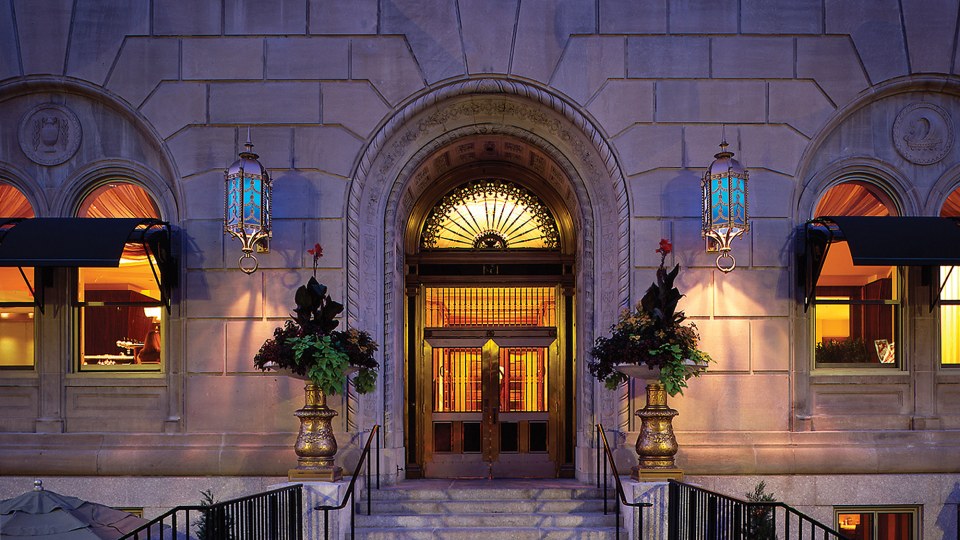
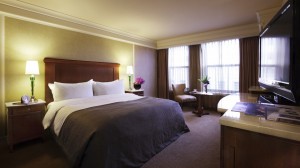
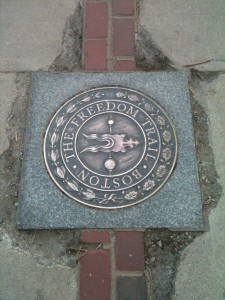
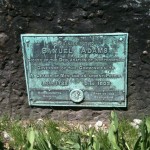
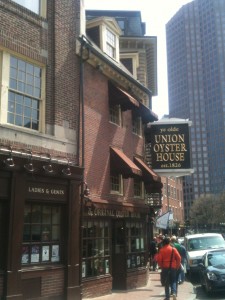
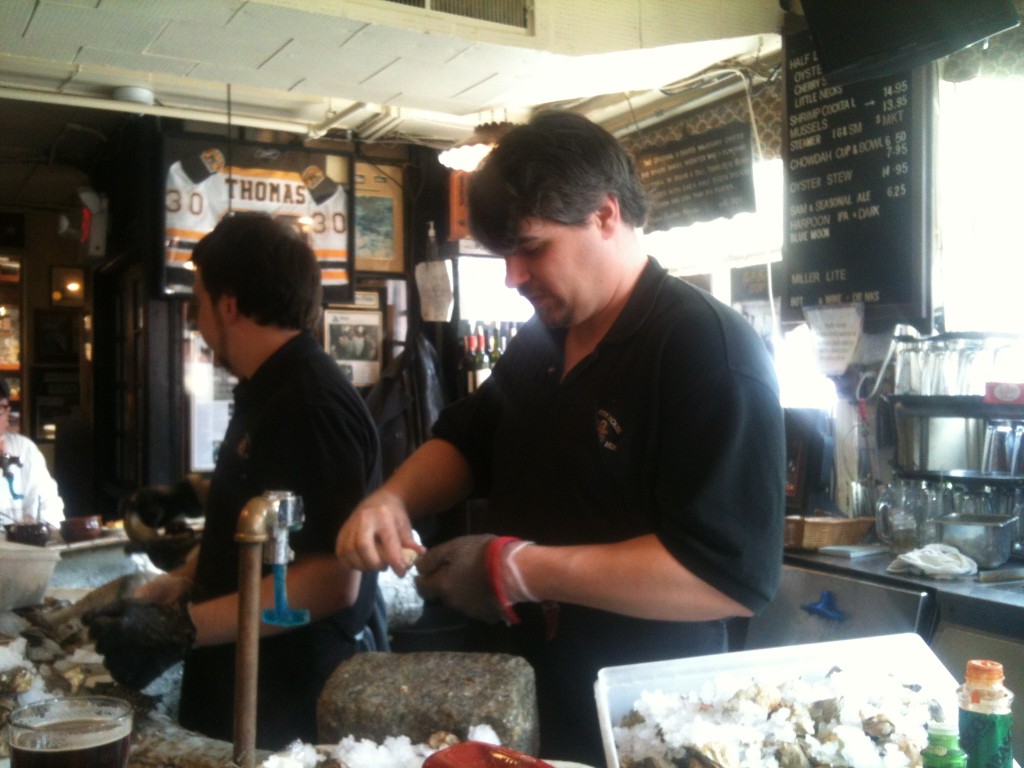

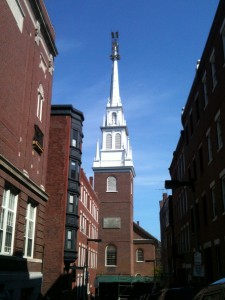
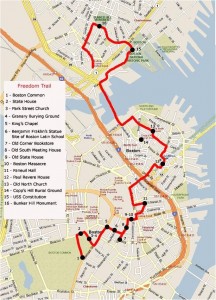
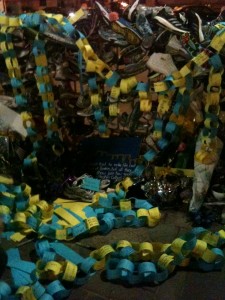

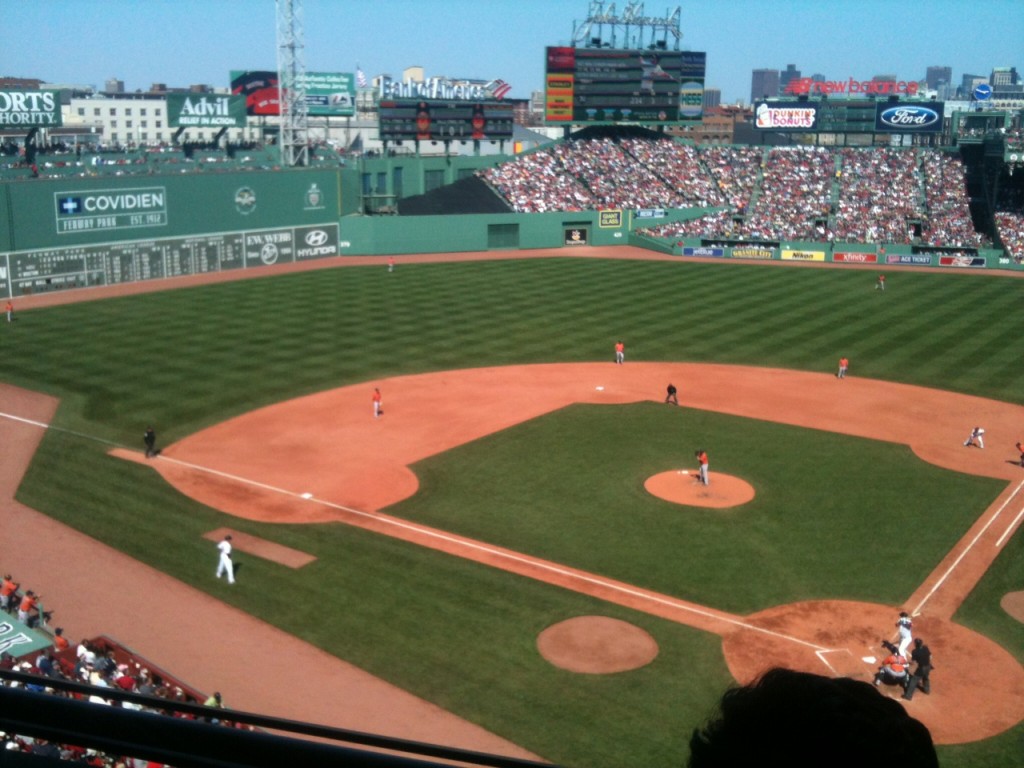

What a wonderful story teller you are! It sounds like Boston has something for everyone. Great article.
Interesting article about a city I love! You sure packed alot in a short visit. I always enjoy reading about your travels and this time getting a review of our American history! Thanks!